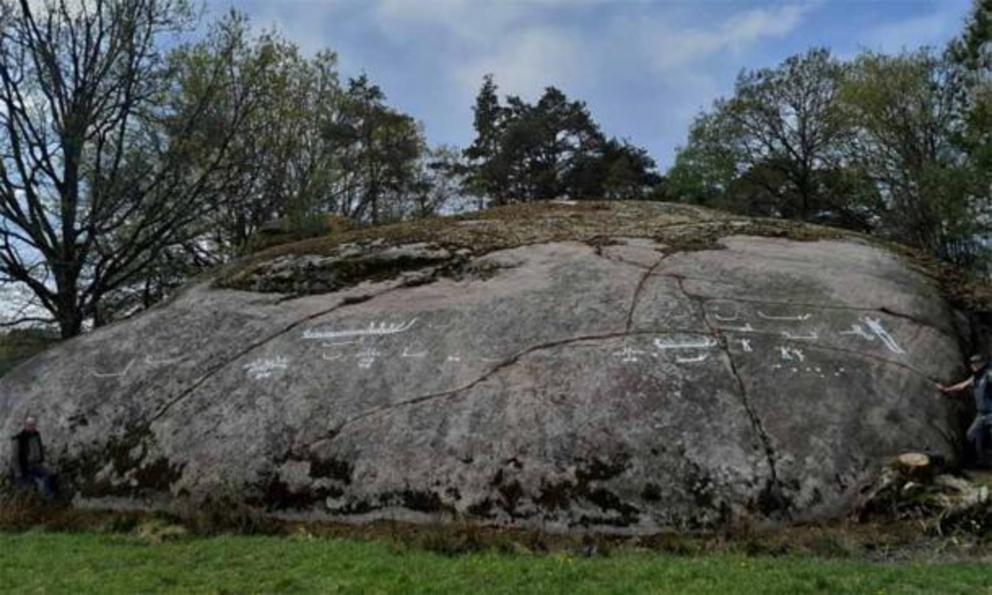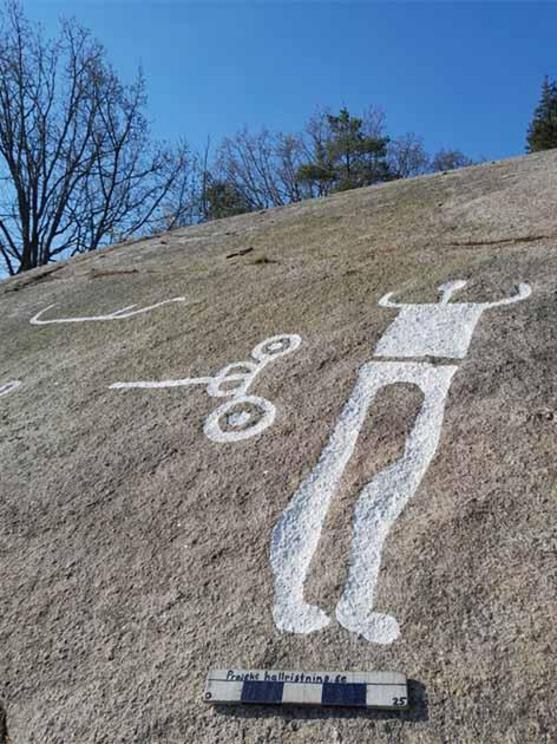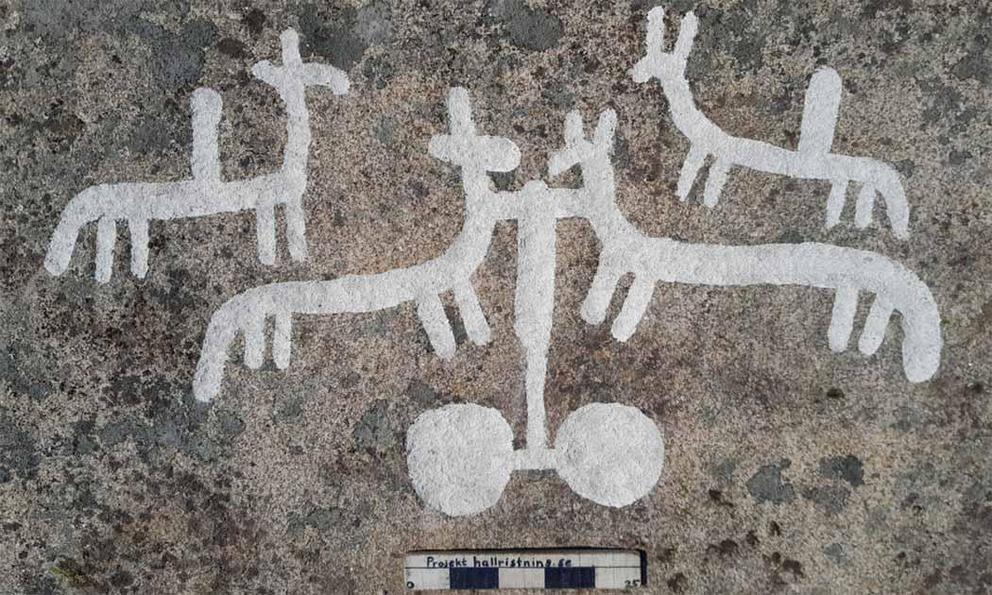Stunning 2700-year-old petroglyphs found hidden under moss in Sweden
Top image: Remarkable Kville petroglyphs found in Sweden.
Researchers combing through the countryside near the municipality of Tanum in the province of Bohuslän along Sweden’s western coastline were shocked to discover a set of approximately 40 petroglyphs carved into the smooth face of a rocky hillside. The section of rock that features the petroglyphs is approximately 50 feet (15 meters) long and includes some unusually large carved-out figures, including a ship that is almost six feet (two meters) long and a stylized human figure measuring approximately three feet (one meter) tall.
The hillside upon which ancient artists created these masterpieces is located in the remote Kville parish, and so the striking set of images are being called the Kville petroglyphs. They were found not far from the spectacular Tanum petroglyphs , which cover 126 acres (51 hectares) of a rocky plateau and are comprised of more than 600 separate panels that feature thousands of images in total.
The Floating Petroglyph Artists of Ancient Sweden
Until very recently, the hillside that contained the petroglyphs was completely covered with a thick layer of moss. This rendered the petroglyphs invisible, and no one suspected that a rocky hillside with a relatively steep ascent angle might have been used as a canvas by an ancient artist.
However, while exploring the ground next to the hillside, a team of archaeologists from the Foundation for Documentation of Bohuslän Rock Carvings noticed what appeared to be white marks peeking through the moss layer at one point. When the researchers began to scrape the moss away, they discovered the image of a long ship that had been carved into the surface of the rock. While the outer layer of rock was a weathered gray in color, underneath that top layer the rock was chalky white, which gave the ship its distinctive appearance.
 When researchers began to scrape the moss away, they discovered images carved into the surface of the rock.
When researchers began to scrape the moss away, they discovered images carved into the surface of the rock.
Once they began to clear more moss away, the discoverers found more and more carved images, arranged in a linear row. In total they found about 40 separate carvings, lined up one after another as if they were meant to relate some type of narrative tale. The set of petroglyphs included 13 ships, nine horses, seven humans, and four chariots, suggesting this was a description of how the carvers of the petroglyphs travelled and explored the world around them.
Commenting on his team’s surprising discovery, archaeologist Andreas Toreld noted that the Kville petroglyphs were found in an unexpected location.
"The motifs are not unique, but the location on an almost vertical outcrop is unusual," he stated in an interview with the Swedish science publication Forskning och Framsteg .
What is important here is that the row of petroglyphs are several feet or meters above the ground, meaning an artist wouldn’t be able to carve them from a normal standing position at the present moment. The likeliest possibility, Toreld says, is that the carvers were standing on the deck of a boat to do this work, at a time when sea levels were higher and the area was underwater.
 The set of Kville petroglyphs includes 13 ships, nine horses, seven humans, and four chariots.
The set of Kville petroglyphs includes 13 ships, nine horses, seven humans, and four chariots.
So when might this have been? According to Toreld and his colleagues at the Foundation for Documentation of Bohuslän Rock Carvings, petroglyph artists standing on boats floating on ancient seas would have been in the right position to carve the images in the seventh or eighth centuries BC—and thus the scientists are able to estimate that the carvings are around 2,700 years old. The Tanum petroglyphs were carved at different stages between approximately 1,700 and 500 BC, so these images may have been created by some of the same artists responsible for these acclaimed artworks.
In 700 BC, the Kville rock face would have been located on the edge of an island. It would have been a prominent landmark, visible to ships passing by from a decent distance. This would explain why the petroglyphs feature so many images of boats, which would have been used to travel back and forth from the island to the Swedish coastline as it existed nearly 3,000 years ago.
A Scandinavian Cornucopia of Prehistoric Artwork
The Scandinavian countries have been blessed with the largest concentration of Bronze Age art on the entire European continent. Up to this point more than 30,000 sites have been detected that feature distinctive carved or drawn images of human and animal figures, abstract shapes, and images of ships, chariots, and other important inventions.
During the period when the Kville petroglyphs were carved, Scandinavian petroglyph makers were exceptionally busy and productive. These highly creative artists remained active throughout the remainder of the first millennium BC, after which the tradition virtually died out.
“During the Younger Bronze Age , from which this one comes, the style was closest to Baroque. Everything was bloated and exaggerated, but perhaps not so realistic," Andreas Toreld explained.
As the latest discovery shows, even now there are more Scandinavian petroglyphs waiting to be discovered. They could be hidden in a thousand different places, covered over with moss, soil, or forest.

